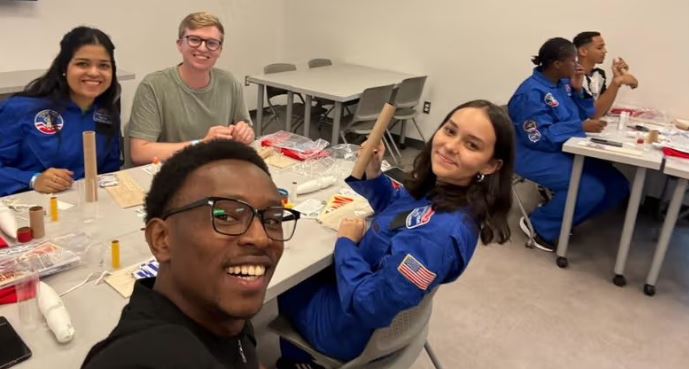Physical Address
60 Ekwema Cres, Layout 460281, Imo
Physical Address
60 Ekwema Cres, Layout 460281, Imo

Linus Anari, a Geospatial Engineering student at the University of Nairobi, and Eileen Mburu, a Geographer, have brought pride to Kenya by emerging victorious in a prestigious global competition organized by the National Aeronautics and Space Administration (NASA).
The two young innovators were among the winners of the Blue Dot Challenge, a competition aimed at addressing some of the world’s most pressing issues, including climate change, water scarcity, and food insecurity.
In the challenge, the participants created visualizations using Earth Observation data that advanced the sustainable development goals of zero hunger, clean water, and climate action.

Linus and Eileen were motivated to participate by the devastating impact of prolonged floods in Northern Kenya, a region that had earlier suffered from extended droughts due to El Niño rains during the October-November-December season.
Eileen explained, “The Northern Kenya regions are inevitably bound to return to drought conditions, creating a repetitive cycle that exacerbates food insecurity and water scarcity.”
To combat these challenges, Linus and Eileen developed a Geographic Information System (GIS) that provides crucial insights into food security hot spots. Their innovation is designed to facilitate targeted interventions by enabling authorities and humanitarian organizations to mitigate the impact of extreme weather events on food security.
“Our GIS tool is not just about mapping; it’s about saving lives by ensuring that resources are directed where they are needed most,” Linus highlighted.
Also Read: Astronauts Stranded in Space Might be Spending Christmas There
The Pale Blue Dot: Visualization Challenge was designed to enable a broader, more diverse audience to engage with Earth observation data. For them, combining large-scale Earth observation data with other data types enabled many participants to better understand specific issues.
The challenge attracted a total of 1,600 competitors and innovators, 70% of whom had never worked with Earth observation data before.
Participants came from all around the globe, representing over 100 different countries including the USA, Mexico, Brazil, and Botswana among others.
Throughout the competition, more than 130 submissions were received.
Interact with us via our social media platforms:
Facebook: Silicon Africa.
Instagram: Siliconafricatech.
Twitter: @siliconafrite.